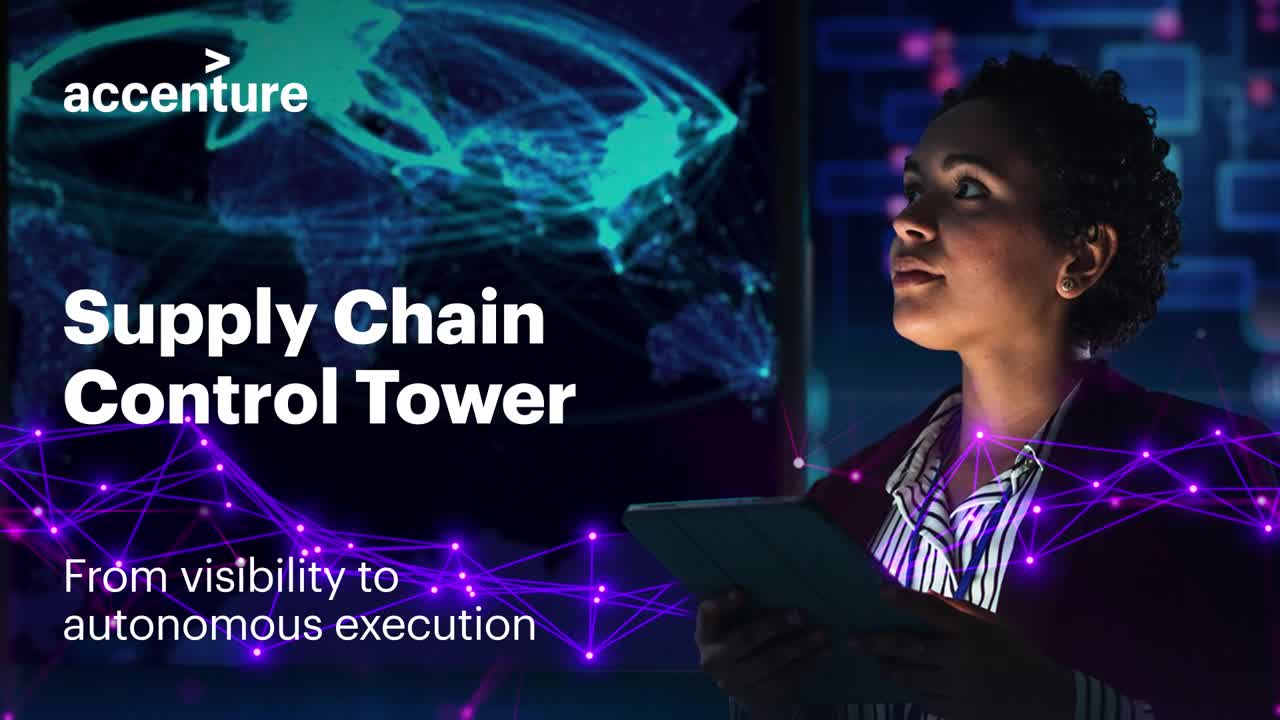Research Report
Supply chain control tower - from visibility to value
10-MINUTE READ
June 15, 2023
Research Report
10-MINUTE READ
June 15, 2023
More and more companies are turning to control towers to provide supply chain network visibility that helps them manage through disruptions. But too often, while they improve visibility, they fall short on delivering full value. A true supply chain control tower (SCCT) does so much more. What’s the difference?
A true SCCT enables a company to proactively orchestrate across its supply chain functions and the broader supply chain network to increase enterprise value. It brings together people, processes, technology infrastructure, and data in new ways of working. From end-to-end visibility to autonomous execution, it helps companies make supply chains more customer-centric, sustainable, responsive, and agile.
72%
of supply chain “masters” believe control tower capabilities will be critical to enable their customer experience-led growth

An SCCT built to drive value comprises four pillars that continuously evolve to deliver against key goals and metrics. Here’s how to derive the full value of an SCCT:
Develop the SCCT to address the specific use cases that will translate into business value. End-to-end visibility isn’t enough (though it is a key capability.) Value comes from acting on that enhanced visibility. And that requires upfront investment in defining use cases and the overall vision.
Related: The New Essential for Supply Chains: Intelligent Execution Control Tower Part I - Supply Chain Management Review (scmr.com).
Break from the linear functional role model to a “network planner” role that spans functional siloes and supply network participants and makes the trade-off decisions that result in superior customer experience and sustainable business value. Help teams develop the new digital and analytical skills to work effectively alongside embedded technologies (including AI and robotic process automation) to improve business impact, efficiencies, and speed.
Build the SCCT on a flexible architecture of decoupled systems so it can evolve over time with the business. Make it easy to scale to new entities and use cases, as well as quickly shift to take advantage of fast-maturing solutions in the market.
Related: The New Essential for Supply Chains: Intelligent Execution Control Tower Part II - Supply Chain Management Review (scmr.com).
Work with less-than-perfect data. Perfect data doesn’t exist, so don’t wait for it. Create a data strategy that identifies data quality issues and improves data integrity—and serves the overall goals of the business.
Leading companies take a hybrid roll-out approach based on business use cases and building capabilities over time. By implementing the SCCT through agile sprints of use cases, companies can build scale (additional entities, regions, or functional areas) while adding depth (visibility, alerts, and response)—one release at a time.


Taking a use case-driven, flexibly architected, hybrid approach to an SCCT can deliver so much more value than the control tower concepts that have been rolled out or attempted for years. Companies that have adopted true SCCTs have realized significant quantitative and qualitative benefits:
Supply chain control towers are rapidly changing how supply chain networks are managed—and how they contribute to strategic business outcomes. Today, an SCCT is a “must-have” capability for companies to move toward an optimized and self-orchestrating supply chain network. It can drive greater enterprise value and help companies thrive.
To read more about SCCTs and their benefits, download the full report.
A supply chain network transforms raw materials and components into a finished product that’s delivered to a customer. It is made up of a complex network of organizations and activities, such as raw materials suppliers, manufacturers, distributors, logistics providers, retailers and the end-customer. Logistics and supply chain management is the orchestration between these networks comprising procurement, management and storage of raw materials and manufacturing, as well as the moving, delivery, and storing of finished goods and after-market services to create maximum efficiency, lower cost, and positive change for society and the planet.
Cloud-based solutions using advanced technologies like AI, IoT and machine learning, supply chain control towers combine people, process and technology infrastructure with key data, business metrics and events from across the end-to-end supply chain. Accessible via a personalized dashboard, a supply chain control tower provides intelligent real-time visibility into developments, along with autonomous execution capabilities. This enables teams to proactively orchestrate across supply chain functions and the broader supply chain network, increasing enterprise value by making supply chains customer-centric, sustainable, responsive, and agile.
Companies that have adopted true supply chain control towers have realized significant quantitative and qualitative benefits. Financial value includes up to 1% increase in revenues, between 3-5% reduction in logistics costs, and 10-20% improvements in labor efficiency. At a strategic level, true supply chain control towers enable their organizations to become data-driven enterprises that make better decisions, win over customers with improved service levels/product traceability, and run efficient, scalable, and agile operations.
A supply chain control tower (SCCT) built to drive value has four pillars. These continuously evolve to deliver against key goals and metrics:
(i) Use-case driven – the SCCT should be developed to address specific use cases that will translate into business value.
(ii) New ways of working – teams need to develop new digital and analytical skills to work effectively alongside embedded technologies.
(iii) Flexible technical architecture – the SCCT needs to be built on a flexible architecture of decoupled systems so it can evolve and scale.
(iv) Robust data strategy and governance – because the SCCT will need to work with less than perfect data, it’s key to create a data strategy that identifies data quality issues and improves data integrity.